Pitching Assessments and Changing Mechanics
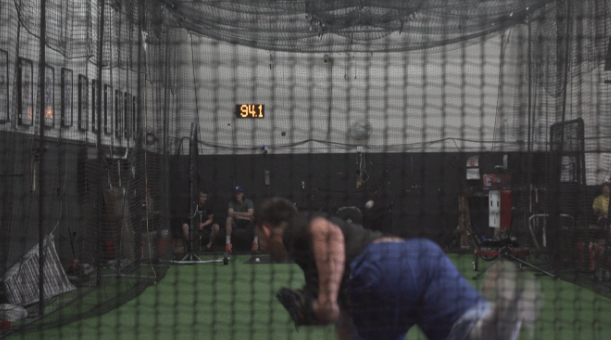
Updated 6/16/2022
Over the past few months, we’ve been traveling around the country performing assessments on athletes with our mobile biomechanics lab. The lab is a crucial piece of our assessment process since the summer of 2017. The reason it’s so key to our process is the data it provides and how it combines with our strength assessment. The culmination of this data shows much clearer than ever before how our athletes move and produce force. But what’s more important here is how it provides us with a means of creating actionable changes to an athlete’s mechanics that circumvent some of the frustrations of a traditional approach.
The Assessment Process
Before we go into how we address mechanical changes, we need to understand the type of data we’re looking at in each piece of the assessment process.
Biomechanics:
The biomechanics lab is a markered system that measures the kinematics and joint kinetics throughout the throwing motion—or the motion of segments and joints, as well as the underlying forces acting upon those joints. Typically, we look at measurements starting at foot contact, not to be confused with foot plant, since this is only the initial moment when the foot first contacts the ground up until ball release.
We can use this data to provide us with a clearer look at what positions an athlete is achieving at various points within his delivery. This provides a huge advantage over any other means of quantifying movement. For example, if instead we used video to assess an athlete’s movement, not only do we lack a full 360-degree perspective of the movement, but also if we filmed the same throw with slow motion on an iPhone, which films at 240 fps, and an athlete’s arm is rotating at 6,000 deg/sec, we’d lose 25-degrees of motion between each frame. That’s a significant amount of motion that video can’t show.
Even at extremely high frame rates, the arm still blurs, and we lose a lot of understanding of how an athlete is actually moving.
Furthermore, a biomechanics assessment allows us to see things imperceptible to the eye, even on high-quality slow-motion video. For example, you may be able to see that an athlete is generating a decent amount of hip-to-shoulder separation on video, but you can’t see the timing of when the pelvis rotation peaks in comparison to torso rotation. Within the biomechanics data, we are not only able to quantify the degrees of separation but also the crucial timing of when the pelvis and torso reach peak angular velocity.
ROM:
The ROM assessment in and of itself isn’t groundbreaking. We hand measure each ROM with a goniometer and assess both active and passive ROMs for various movements. Some of this data provides us with potential injury predictors; others provide us with stability or ROM restrictions that may be impacting performance. The main piece here is that it’s not subjective. Each position is measured, which limits the experimenter bias that may happen in less objective ROM assessment processes.
Strength:
The strength assessment seeks to examine an athlete’s force-velocity profile. We use the tendo unit to determine barbell velocities at three different percentages (30%, 40%, and 50%) of an idealized one-rep max (1RM) for squat, deadlift, and bench press. The 1RM is determined using an allometric score, factoring both the height and weight of an athlete. This data can then give us some insight into how strong, how explosive, and how efficient an athlete is at moving at different weights.
What does it look like?
To help provide some context as to what each piece of the assessment looks like, here’s a snippet of data from one of our pro pitchers, who used to sit in the mid 90s but now averages upper 80s.
The photo above is a look at the max hip-to-shoulder separation he generates during his delivery and at the timing of his peak-pelvis rotational velocity to his peak-torso rotational velocity. Ideally, here we want to see him generate a higher degree of hip-to-shoulder separation and have the timing between peak pelvis and torso rotation be at .05s or greater.
From the ROM assessment we see that his thoracic ROM is significantly lower on the left side. Since he’s a left-handed pitcher, it’s common to have a deficit to the throwing side. However, we know he already generates a low amount of hip-to-shoulder separation and because of this we would like to see a higher degree of thoracic rotation.
His strength assessment is significantly below the parameters we look for on all weights, but by examining the spreads between velocities, we see that the gap between them is fairly consistent, though greater than what we typically like to see. This suggests that the athlete is likely weak but explosive in nature since the lightest weight was only .18 off the mark, whereas the heaviest weight was .41 below the desired number.
We no longer perform VBT for our assessments, you can read more on our current assessment process at the bottom of this blog.
Examining the Assessment at a Macro Scale
Admittedly, we’re not the first to use any one of these pieces to assess athletes. ASMI has had a biomechanics lab since 1987, ROM has been assessed long before the invention of the first goniometer, and, though velocity-based training technology is somewhat new, strength coaches have been using various percentages for decades to assess and train their athletes.
The game changer is how we examine the assessment. Typically, most places provide assessment reports in the form of piece-by-piece data labeling inefficiencies, similar to the above. There are also no prescriptions to correct these inefficiencies, so unless you have a high-level knowledge of movement, mobility, and stability, you really don’t know how to go about enacting change.
What we aim to do at Driveline is to combine each piece into a whole and then attack any deficiencies through an integrated approach. To better provide clarity, let’s discuss all of the data above from our pro pitcher and how they factor together.
So, we know from the biomechanics report that the athlete mentioned above is lacking hip-to-shoulder separation and the timing of this movement is poor. This is likely linked to his lack of thoracic ROM and his inability to rotate to his throwing side, but why can’t he rotate? The last piece of the assessment helps provide an answer: he’s lacking strength. So, for an athlete who once threw in the mid 90s, his hips and torso have to rotate at extremely high velocities. If his strength is poor, especially hip and core, then his body will provide protective tightness so that he doesn’t put damaging levels of stress on his spine.
What you haven’t seen is that his right hip also has a deficit in hip IR, creating a total IR/ER ROM deficit of 14 degrees. The right hip has created protective tightness to prevent itself from working into a ROM it doesn’t feel safe in, the lumbar spine has since become mobile rather than stable, and this has caused him to experience a myriad of lower-back issues over the years. From there, his t-spine has become stable since the lumbar spine is now mobile, the root cause for his significant deficit in hip-to-shoulder separation. Furthermore, this carries all the way up to the shoulder where he has a slight deficit in left-shoulder IR causing a total IR/ER ROM deficit in the throwing shoulder that is similar in nature to the right hip.
In order to get him back to throwing mid 90s, we first and foremost need to restore ROM and strength to the hips and core.
Does This Really Matter?
You may be reading this and say, “Well I’ve done parts of this. My trainers collect ROM data, I use video, my strength coaches improve strength. We’re doing all of these things even though we don’t sit down and discuss it together. Does that matter?” Or maybe you only do some of these things, but not all, so how does that impact the way you program and coach?
Let’s take a look at the same pro athlete’s data and consider how if you only look at one piece of the assessment, then you may wind up spinning your wheels and not developing your athlete at all, or worst case, decreasing his performance. For example, say you only look at the biomechanics data and see his deficit in hip-to-shoulder separation. We know we need to improve this, so you program roll-in drills to help him get into a position where his torso is closed while the pelvis opens into foot contact. However, he’s physically incapable of getting into that position, and repeatedly doing it and failing overtime will result in both he and you growing frustrated. You might think he’s lazy and he loses buy in with what you’re trying to get him to do.
This kind of scenario happens all the time in a variety of ways. We’ve seen it with athletes from a ROM aspect as well. The same athlete could come in and get assessed and find out he has a deficit in thoracic rotation. His coach programs a bunch of mobility drills around t-spine mobility, but the athlete is hypermobile and lacks stability. He does the drills religiously, but he winds up having worse rotation than at the beginning. Often the coach goes on to blame the athlete—saying he didn’t do the work, he was lazy with his reps—and meanwhile the athlete’s getting worse because his body craves stability and all you’re doing is adding more ROM.
Lastly, imagine you only look at his strength data. Sure, you know he’s weak and you know he has to get stronger, but what you may not see is the deficit in hip mobility. You may spend the next few training blocks hammering out bilateral strength, but if you’re not addressing his frontal plane and core stability, you may not help him restore his ROM. You’ve helped him gain a bunch of strength, but he may not be able to effectively apply that force and transfer it because his movement quality is still poor.
Building a Different Approach to Mechanics
We’ve addressed part of this already, but to take this full circle, let’s discuss how we can use the assessment data to make changes to an athlete’s mechanics.
If you follow Driveline, you likely have an idea of how we use backwards chaining, over- and under-load weighted baseballs, Plyo Ball ®, and high-intensity training to alter mechanics. It’s a huge piece of our success and one that we’re constantly refining. One of the ways we’re doing this currently is using our biomechanics report to adjust programming by altering what Plyo Ball ® are thrown, what drills we use, how many reps are performed, as well as other things to influence mechanical changes.
This is something the baseball world has roughly been doing forever: seeing mechanical flaws and using drills to try and correct for them. With the biomechanics report, we just have a much more targeted approach.
However, where the real magic happens is what we can do on the strength side to drive mechanical changes. As mentioned previously, a lot of the time you’re putting athletes in drills or coaching positions they’re actually incapable of getting into. Using the biomechanics, strength, and ROM assessments, we can structure soft-tissue work and a warm-up around an athlete’s deficiencies by working to open up ROM, strengthen through the newly obtained ROM, and then priming for the rest of the workout.
As for the actual lifts, consider this excellent quote by Vern Gambetta: “We want to train movements, not muscles.” Sure, we want to get guys stronger, but we have to target the movements we do poorly and strengthen the ones we do well. This is what helps drive mechanical changes.
For example, we’re big believers in using med balls once we’re confident an athlete’s hip and core strength is ready for it. Med balls work well because they’re a power exercise, but not so light that they create a large amount of fatigue, which provides us with a great way to get extra repetitions of the movements we want to change when we can’t throw more baseballs.
The key here is that we’re not giving the athletes answers; we’re not telling them how to move or breaking everything down into a specific movement. That’s not an efficient way to learn. Instead, we help athletes achieve the adequate strength and ROM to move more efficiently through weight-room work and then use high-intent weighted-ball training with external cueing as the bread crumbs to allow athletes to self discover how to move optimally for themselves.
The Wrap
What we really want you to take away from this post is the importance of a full in-depth assessment for improving player development. You may not have the ability to perform each of these pieces the way we do at Driveline, but if you aren’t integrating these pieces to really take an in-depth look at your athletes, then you’re missing out on huge opportunities to make strides in their performance.
However, this is all useless if you still go about trying to change mechanics solely through internal cueing or drill work. You need more than that. Changing ingrained movement patterns is difficult, especially when a large amount of how athletes move is purely a result of their strength and ROM. Start thinking about different ways to create movement change. Don’t break the movements down into unnecessary pieces, but start assessing them and then structuring programs around what the athletes’ deficiencies are. If you’re putting them in constraint drills that force them to correct their deficiencies in order to throw harder, you’ll start finding that athletes will often begin moving better on their own as they begin to gain the strength and ROM to do so.
This article was written by Head of Athlete Performance Sam Briend
2022 Update
Starting in 2020, we revamped our strength assessment. Due to certain limitations in the tendo and similar units, we elected to begin using force plates. An overview of the testing battery can be found here. We use a range of tests to find the athlete’s Maximal Strength, Explosive Strength, and Reactive Strength.
Limitations using bar speed include standardization, accuracy of the technology, and skill involved in the lifts themselves. The aim was to minimize these limits and create a more robust dataset with our athletes. The new battery of tests has done this to a high degree and allowed us to continue to improve athlete results while creating some very interesting models, such as predicted velocity.
Comment section
Add a Comment
You must be logged in to post a comment.
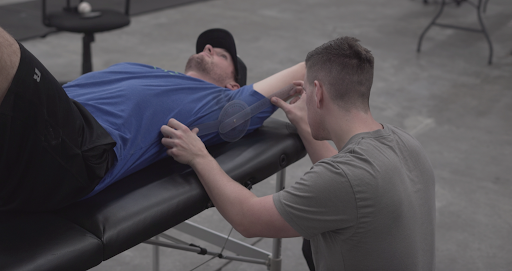
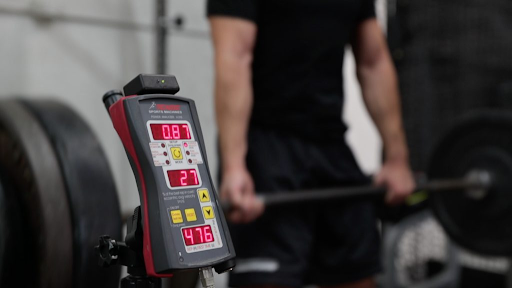
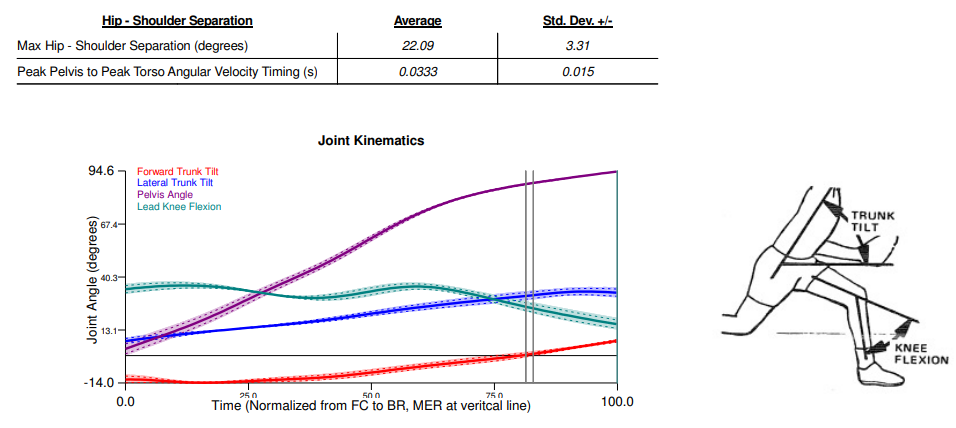

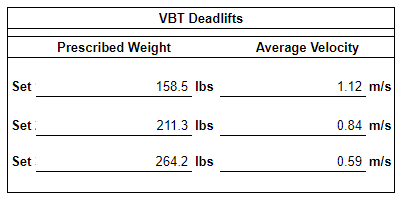
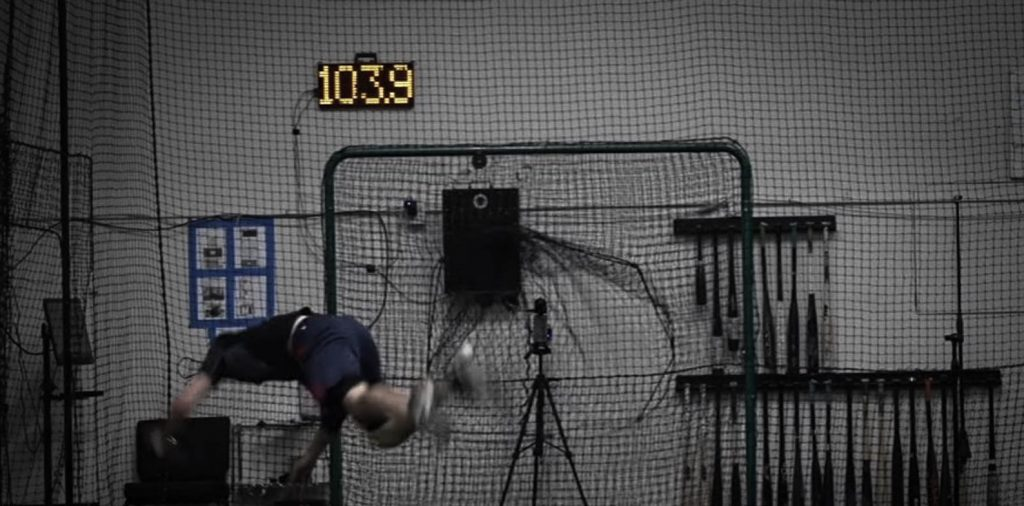
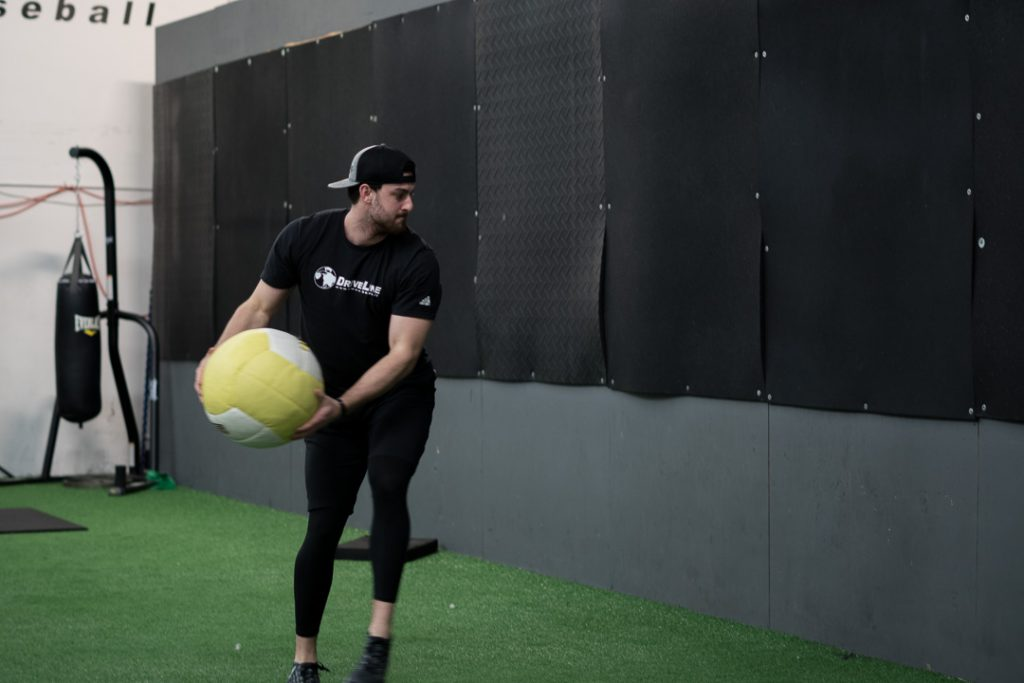
Thom Krupar -
Great article. I will use this while rehabbing my pitchers. Most of the time they want to start “changing their mechanics” when they start rehab. I have to convince them to get mobile, stable and strong first. Thanks.
Thom Krupar, PT, AT
Ricky Norton -
Awesome. You guus keep getting better & better. Love it.